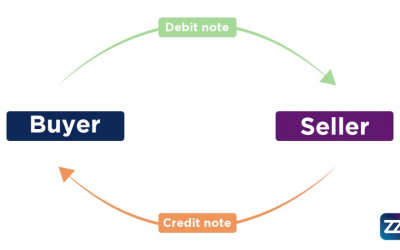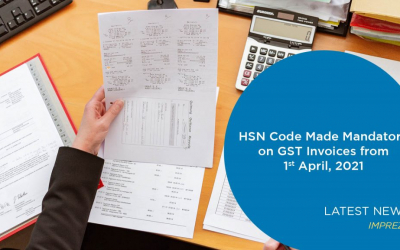 When a transporter wants to carry goods from one place to another, he needs to keep the e-way bills. Also need to meet certain conditions.
When a transporter wants to carry goods from one place to another, he needs to keep the e-way bills. Also need to meet certain conditions.
What is an E-Way Bill?
E way bill stands for Electronic-way bill. The e-way bill portal can generate an E way bill and is used when the goods have to move from one place to another. There is other e-way bill software that helps to generate the bill. If the value of the transport goods of a registered person exceeds Rs. 50000, then the person needs to carry an e-way bill. The e-waybillgst.gov.in can generate an e-way bill. The other means to generate an e-way bill is through an android application, SMS, or a website.
When the e-way bill generates, there is a unique e-way bill number associated with the bill. This number is available with the recipient, transporter, and supplier.
Conditions to Generate E-Way Bills
There are different conditions to generate e-way bills. Thus, a common portal generates the bill. There is a specific type of goods for which we need to take the e-way bill. Whether the consignment value is more or less than Rs. 50,000.
- Transport value is more than Rs. 50,000.
- If the recipient wants to return the product.
- If an unregistered person did inward supply.
The Conditions Are:
- Handicraft goods transported interstate.
- Goods move from the principal to the job-worker by the principal. The movement of goods is interstate.
Who Needs to Generate an E-Way Bill?
Three main parties need to generate an e-way bill.
1. Registered Person
The GST registered person has to generate an e-way bill if the consignment value is more than Rs. 50,000. The movement of good can be from or to a registered person. If he wants to carry an e-way bill with consignment having a value less than Rs. 50000, he can do that.
2. Unregistered Person
The unregistered person also has to generate an e-way bill. If an unregistered supplier delivers goods to a registered person, the receiver must check it as if they are the suppliers.
3. Transporter
If the supplier has not generated an e-way bill, then the only transporter has to generate it. Anyhow, transporters need to carry e-way bills carrying goods via rail, road, air, etc.
These people can use GST e-invoice software to guide and tell all the necessary conditions required to generate an electronic-way bill.
Conditions Under which E-Way Bill Generation in Not Required
There are various conditions when there is no need to generate an e-way bill. They are:
- If the mode of transport is a non-motor vehicle.
- When the goods move from the airport, customs port, land customs station, or air cargo complex to container freight station or inland container depot.
- When goods move under customs seal or customs supervision.
- When the goods exempt from e-way bill requirements according to the GST regulation of respective state or union territory.
- When the consignor is any local authority, the state government, or central government and the goods are transported by rail.
- The goods mentioned in annexure to rule 138(14), exempt supply of goods list, particular schedule to the central tax rate, according to schedule III the goods treated as no supply.
- Under the ministry of defense, if there is any transportation of goods as a consignor or consignee.
- If the cargo containers are empty.
- The movement of transit cargo from or to Bhutan or Nepal.
- If the goods’ movement is from ICD under customs, it bonds to customs port or any other custom stations.
Rules to Generate E-Way Bills and Its Implementations
Every state has different rules for the electronic-way bill and its implementation. The e-way bill generation started on 1st April 2018. There is a rapid increase in the interstate transportation of goods. There is an excellent response to the e-way bill from the states and union territories. They also joined this league of generating e-way bills. Few states/ union territories have given some relief and exemption from e-way bill generation.
The exemption is based on the monetary limit and some specific items. For example, in Tamil Nadu, there is no need to generate an e-way bill if the monetary value of the items is below Rs. 1,00,000. More details are there on commercial tax websites for states/union territories.
You can refer to Imprezz GST software or any e-filing software to see the limits and other exemptions.
Process of Generating an E-Way Bill
There is E-invoicing software that can generate an e-way bill. An electronic-way bill portal can also generate the bill. You have to log in to the portal and follow the necessary steps.
- Go to the e-way bill system.
- Log in by entering your login credentials, username, password, and captcha code.
- Click on the e-way bill dropdown option on the left side of the dashboard and select generate new.
- Fill in all the details that you see on the screen. Like:
- If you are a supplier, choose outward and if you are a recipient, then select inward in the transaction type.
- Next, you have to choose from the sub-type. There are different options for inward and outward transactions.
- Select the document type.
- Enter the invoice or document number.
- You need to select the date of the document. You cannot choose a future date as it is not allowed by the invoicing system.
- In the to/from section, you have to enter the details depending upon whether you are a supplier or recipient. You have to mention the URP if you are an unregistered user.
- You have to add the details of the items like product name, description, HSN code, quantity, tax rates, etc.
- Transporter details are also required, like distance and mode of transportation.
You have to submit the form after filling in all the details. Your form will get an error if the data entered is not valid; otherwise, a 12-digit unique number will appear.
E-Way Bills Validity
The e-way bill is valid for a specific period. The validity depends upon two factors. One is conveyance used, and the other one is distance.
The validity of an electronic-way bill depends on the time and date of generation of the bill.
Let us see the validity according to the different factors.
For Over-Dimensional Cargo
- There is one-day validity if the distance is less than 20 km.
- There will be one extra day for every additional 20 km.
For Conveyance Other than Over-Dimensional Cargo
- There will be one-day validity for a distance less than 100 km.
- There will be one extra day for every additional 100 km.
We can also extend the validity of the e-way bill. This extension can happen in only two conditions.
- Four hours before the expiry, or
- Within 4 hours after the expiry.
Necessary Documents Required to Generate an E-Way Bill
- Invoice of the goods that are moving from transport.
- If the goods are transported by road, the vehicle number or transport ID.
- If the goods are transported by air, rail, ship, transport document number, transporter ID, and document date.
Conclusion
Many GST registered or unregistered users and transporters do not know from where to generate this electronic-way bill. So, there is GST billing software like Imprezz; that will guide and help you fill the form according to your need. These conditions need to consider if you are generating the e-way bill using Imprezz accounting software.
We offer a 14 days free trial software program for small business owners in India. Log in to start your GST accounting today!


